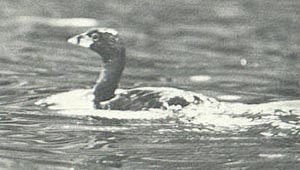About Us
Inspired by the power of evolution.
We are constantly evolving better science by applying the latest advances in genomics and synthetic biology to help reduce costs, simplify workflows and improve results. Our core protein engineering technologies enable us to tailor enzymes to suit specific applications in next-generation DNA and RNA sequencing, DNA amplification and molecular diagnostics. Biomedical research is no longer limited by the constraints of native enzyme structure or function.
Since 2003, we have pioneered the use of directed evolution to develop a suite of high-performance reagents for a range of life science applications. Our products are used by thousands of scientists around the world and cited in more than 2,000 peer-reviewed publications. In the future, we will continue to evolve and provide more innovative solutions that accelerate genomics research and help further improve our ability to diagnose, monitor and treat cancer and complex inherited and infectious diseases.
Solix Biosystems is based in Massachusetts, and has a research, development and manufacturing facility in South Africa.
Change is part of Solix
On his Beagle voyage to the Galápagos Islands, Charles Darwin discovered several new species of fauna and flora that varied from island to island. He used these incredible examples of genetic diversity to explain his Theory of Evolution by Natural Selection.
Solix Biosystems continues to be inspired by the power of evolution and the same underlying principles of natural selection. We are constantly adapting and evolving as a company because of our unwavering commitment to improve innovative research, product quality, employee development, and customer satisfaction.

Iconic symbols of the Galápagos, blue-footed boobies are renowned for their comical dance, clumsy step, and colorful namesake. Derived from the Spanish word bobo (“stupid”, “fool”, or “clown”), these flashy fowl exemplify the evolutionary force Darwin termed “sexual selection” in his book On the Origin of Species. The intensity of the blue, which ranges from turquoise to azure, is actually a strong driver in the selection of a mate for both male and female boobies.
But make no mistake–it’s not a frivolous decision on either’s part! It turns out that the hue, derived from and intensified by carotenoid pigments found in their fresh fish diet, has a direct correlation to the individual’s health. Carotenoids boost the boobies’ immune system, so by choosing a mate with vibrant extremities, the booby is selecting a suitable partner by the most candid and reliable indicator of health and vigor. Fascinating, isn’t it? But it doesn’t stop there. Foot color also reflects maternal and paternal investments in their offspring.
Darwin’s finches are a group of about fifteen species of birds found solely among the Galápagos Islands, and ironically unrelated to true finches. When Darwin collected specimens during his second voyage of the Beagle, he had no idea of their significance; samples were haphazardly grouped and labeled by island. Jonathan Weiner, author of The Beak of the Finch, referred to these birds as “paragons of Darwin’s theory”, as these passerines became the foundation of his controversial research.
One of Darwin’s finches, the medium ground finch (Geospiza fortis), was the first which scientists have observed evolving in real time. In 1977, evolutionary biologists Peter and Rosemary Grant witnessed the collapse of the fortis’ food supply during a severe drought on Daphne Major.
They catalogued various phenotypical attributes of the entire finch population, and witnessed the mostly imperceptible changes in beak dimensions as fortis adapted to the desiccated landscape. As their preferred diet of smaller, softer seeds became scarce, those finches with even slightly larger beaks—capable of cracking the more robust, harder-shelled seeds—endured. Read more in the Nature article “Caught in the Act”.
Unique among modern lizards, the marine iguana survives by foraging algae and seaweed along the shores and seas of the Galápagos. The flat-snouted, spikey-finned reptiles are ectothermic and rely on the warmth of the sun and lava rock to aid in digestion and return their body temperature to normalcy after excursions in the frigid waters. When basking to recover, their bodies are no longer mobile and they exude lackadaisical–though intimidating–indifference. This air, coupled with the not-so-flattering nasal expulsions of post-meal salt, led to Darwin’s coined “imps of darkness”.
Not only have these Marine Iguanas cleverly carved a niche within this relatively confined and harsh ecosystem, it has been recorded that they can actually adjust their size to ensure survival. During extensive periods of food shortages, their length can be reduced by as much as 20%—two-fold the amount that can be accounted for by diminished connective tissue alone. Niño conditions also favor the smaller-bodied iguanas as they can tolerate more feed/bask cycles, as their size requires less recovery time.
The Galápagos are an archipelago of volcanic islands on the Nazca Plate, less than 600 miles west from their parent country, Ecuador. The first islands formed here at least 8 million years ago, and while the older islands have disappeared below the sea, the youngest islands—Isabela and Fernandina—are still being formed.
Primarily a geologist at the time, Charles Darwin was impressed by the quantity of volcanic craters they saw, later referring to the archipelago as “that land of craters.” The collections and observations made here during his voyage on the Beagle fueled Darwin’s theory of evolution by natural selection.
Myriad species thrive across these 18 volcanic islands, where Darwin muses the “birds are strangers to man and think him innocent as their countrymen, the huge tortoises”. From islets of porous rock and leafless shrub to lush valleys, the Galápagos teem with cacophonous wildlife that continues to inspire generations of biologists and tourists alike.
